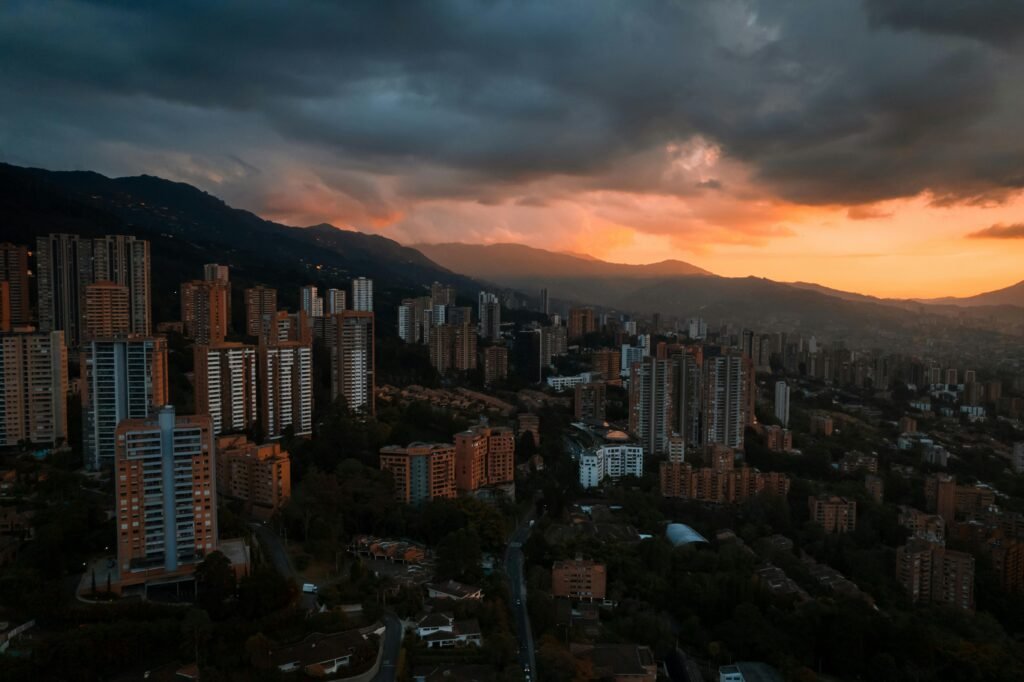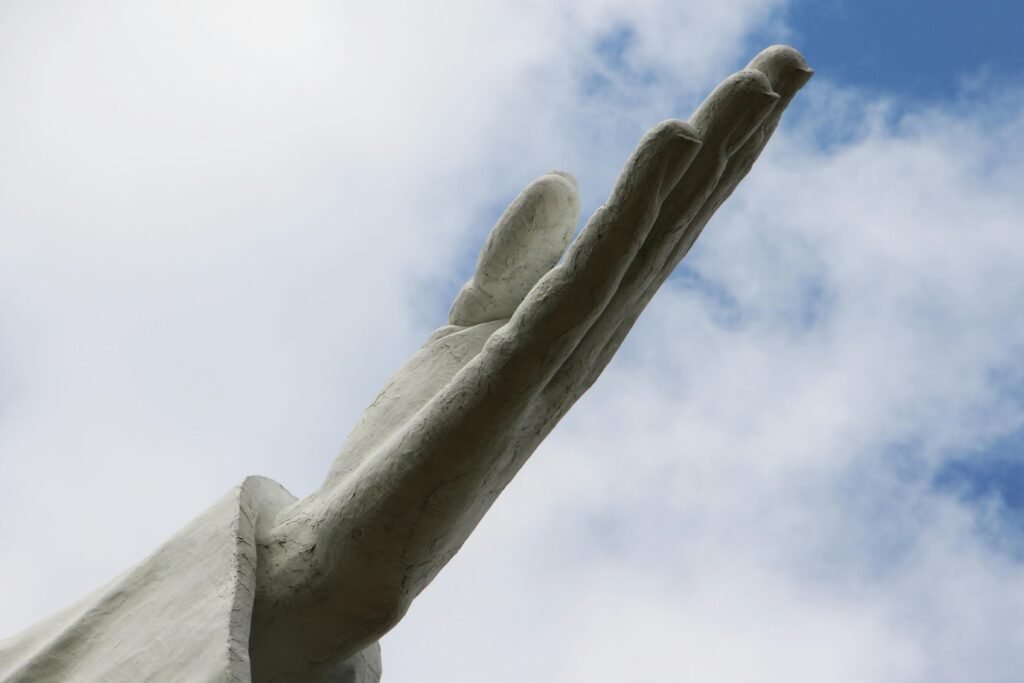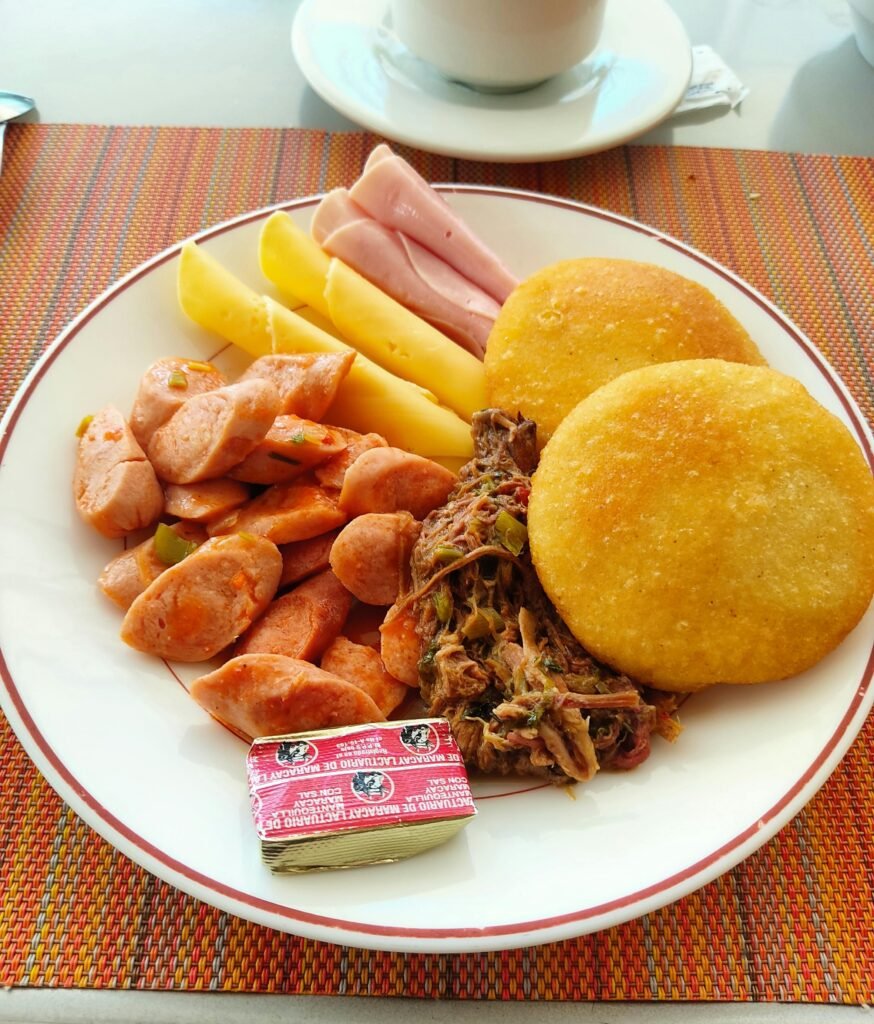Exploring Bogotá: The Heart of Colombian Culture
As the capital of Colombia, Bogotá serves as an essential hub for the country’s culture, showcasing an impressive blend of history and modernity. Established in the 16th century, Bogotá has grown from a significant indigenous settlement to a contemporary metropolis, rich in diversity and cultural expressions. The city is nestled in the Andes mountains, providing a dramatic backdrop that enhances its vibrant character.

One of the cornerstones of Bogotá’s cultural scene is its extensive array of museums. The Gold Museum, or Museo del Oro, stands out with its vast collection of pre-Columbian gold artifacts, reflecting the intricate craftsmanship of indigenous cultures. Another must-visit institution is the Botero Museum, which features the works of renowned Colombian artist Fernando Botero, celebrated for his unique style of exaggerated proportions. These museums not only preserve Colombia’s history but also foster a deeper understanding of its artistic traditions.
Street life in Bogotá pulses with energy, marked by a dynamic street art scene that transforms the urban landscape into a vibrant gallery. Murals and graffiti adorn many neighborhoods, reflecting social issues and cultural narratives that resonate with both locals and visitors. This artistic expression captures the spirit of Bogotá, making it a visual feast for anyone exploring its streets.
Besides its museums and street art, Bogotá is also a pivotal center for politics, arts, and education in Colombia. The city boasts prestigious universities and institutions that draw students and scholars from across the country and abroad. Events and festivals, such as the Bogotá International Book Fair and the Festival of Ibero-American Theater, further underscore its role as a cultural leader in the region.
In essence, Bogotá encapsulates the rich and complex cultural tapestry of Colombia. With its historical landmarks, contemporary art, and intellectual vigor, the city offers an unparalleled glimpse into the heart of Colombian culture, inviting exploration and engagement for every culture lover.
Medellín: A City of Innovation and Transformation
Medellín, once known for its challenges, has undergone a significant transformation, evolving into a beacon of innovation and culture in Colombia. This metamorphosis is not merely physical; it embodies a new spirit of resilience and creativity among the city’s residents. The Medellín Metro, inaugurated in 1995, stands as a symbol of this change. As the first and only metro system in Colombia, it has drastically improved urban mobility, connecting diverse neighborhoods and fostering greater access to economic opportunities.

The city’s commitment to culture is evident in its various cultural spaces, such as Parque de los Deseos, which serves as a hub for artistic expression and community engagement. This park often hosts film screenings, concerts, and cultural festivals, bringing residents together to celebrate their heritage and creativity. One of the most significant events is the Semana Santa (Holy Week) celebrations, which showcase traditional processions and music that reflect the deep cultural roots of the region.
One of the highlights of Medellín’s cultural calendar is the annual Feria de las Flores, a vibrant flower festival that draws visitors from around the world. This extravagant event features elaborate floral displays, parades, and performances that highlight the city’s rich history in flower cultivation. The festival not only showcases Medellín’s natural beauty but also exemplifies the city’s spirit of innovation as it blends traditional elements with contemporary art and music.
Music and dance are integral to Medellín’s cultural identity, with salsa reigning as a popular genre. Numerous dance studios and social clubs throughout the city offer lessons and practice sessions, making it easy for both locals and tourists to immerse themselves in this dynamic aspect of Colombian culture. In Medellín, the energy of salsa is palpable, with lively rhythms creating an atmosphere of joy and connection.
Cali: The Salsa Capital of the World
Cali, often referred to as the salsa capital of the world, is an essential destination for anyone passionate about music and dance. The city’s vibrant energy comes alive through the intoxicating rhythms of salsa, an art form that resonates deeply in its culture. Historically, salsa originated from a confluence of African, indigenous, and European influences, transforming into a unique sound that permeates daily life in Cali. This rhythmic expression not only entertains but also serves as a reflection of the city’s rich cultural heritage.
The local salsa scene is characterized by myriad clubs where both amateurs and seasoned dancers gather to enjoy live music and lively performances. Venues such as Zaperoco and La Topa Tolondra welcome visitors to experience the authenticity of Cali’s salsa. Here, the music pulsates with energy, prompting people to hit the dance floor, embodying the spirit of salsa. Weekly dance lessons are often available, making it easy for newcomers to join in the fun. The sense of community and competition drives enthusiasts to refine their skills and embrace the joy of dance.

Cultural Highlights: Museums and Art Galleries
Colombia is a vibrant tapestry of culture and history, prominently showcased through its numerous acclaimed museums and art galleries. Each major city offers a unique window into the nation’s rich heritage, featuring exhibits on pre-Columbian history, contemporary art, and traditional crafts that reflect the diverse influences shaping Colombian society. In Bogotá, for instance, the Museo del Oro is a must-visit, housing an extensive collection of gold artifacts that narrate the stories of indigenous peoples and their profound relation with the metal. This museum not only highlights pre-Columbian techniques but also delves into the broader context of Colombia’s rich socio-political history.
In Medellín, the Museo de Arte Moderno stands out with its impressive array of contemporary works that push the boundaries of artistic expression. This gallery not only features established Colombian artists but also offers insight into international movements, making it a critical space for dialogue between local and global art scenes. Meanwhile, the city’s Plaza Botero provides an outdoor gallery, celebrating the larger-than-life sculptures of Fernando Botero, inviting both residents and tourists to connect with art in a communal setting.
The Caribbean city of Cartagena also boasts numerous cultural venues, including the Museo del Oro Zenú, which showcases traditional crafts and the artistic legacy of the Zenú community. In addition to these prominent sites, Colombia is home to countless local galleries that spotlight emerging artists. These venues are instrumental in fostering new talent and innovation, enriching the artistic landscape and offering a platform for dialogues on contemporary social issues. Through this dynamic interaction of spaces and exhibits, Colombia reveals its multifaceted cultural identity, appealing to both history enthusiasts and modern art lovers alike.
Street Art: The Urban Canvas of Colombia
Colombia has emerged as a significant player in the global street art movement, showcasing a vibrant urban canvas that reflects its cultural richness and socio-political landscape. Particularly in cities like Bogotá and Medellín, graffiti and murals have become essential forms of artistic expression, embodying the voices and stories of the communities they inhabit. These artistic endeavors provide a means for artists to comment on societal issues, offering both critique and celebration of Colombian life.
In Bogotá, the capital city, the street art scene is particularly dynamic. Notable districts such as La Candelaria and Chapinero are adorned with striking murals that range in style from abstract to realistic portrayals. Many of these works address pressing topics, such as inequality, peacebuilding, and the environment, giving international visitors a glimpse into the country’s complex history. Among the talented artists making a name for themselves is El Pez, recognized for his whimsical fish motifs, and Modimo, known for his powerful imagery depicting social struggles.
Similarly, Medellín, once infamous for urban violence, has transformed its narrative through vibrant street art. The Comuna 13 neighborhood, once a hotspot for conflict, now serves as an open-air gallery where stories of resilience and hope are told through walls painted with color. Guided street art tours allow tourists to immerse themselves in this creative space, providing context and inviting discussions about the messages behind each piece. These tours not only promote understanding of the artwork but also support local artists and businesses, contributing to the city’s ongoing revitalization.
Overall, Colombia’s street art scene serves as an engaging window into the country’s evolving identity. Visitors are encouraged to explore the murals, partake in guided tours, and appreciate the artistic expressions that inform Colombia’s urban landscapes.
Festivals: A Celebration of Music and Culture
Colombia is renowned for its lively festivals that serve as a vibrant showcase of the country’s rich cultural heritage. One of the most prominent celebrations is the Carnaval de Barranquilla, held annually in February or March, depending on the Easter calendar. This festival, declared a Masterpiece of the Oral and Intangible Heritage of Humanity by UNESCO, features a colorful parade with traditional costumes, music, and dance that reflects the diverse influences of Colombian culture. The beats of cumbia, porro, and vallenato, among others, fill the air, inviting locals and tourists alike to participate in the joyous atmosphere.
Equally notable is the Festival de la Salsa in Cali, which takes place in late August. Often regarded as the salsa capital of the world, Cali boasts a celebration that draws salsa enthusiasts from around the globe. This festival not only features spectacular dance performances and competitions but also offers workshops led by renowned dancers and musicians. Expect to immerse yourself in the rhythm, perhaps even joining an impromptu dance session in the streets as the vibrant sound of salsa music permeates the city.
For travelers, timing is crucial when planning to visit these festivities. Both events attract large crowds, so booking accommodations well in advance is advisable. Additionally, visitors should consider attending the local preparatory events, which often occur before the main festivities. These smaller gatherings provide an authentic taste of Colombian traditions and a chance to connect with the local communities.
Throughout Colombia, various festivals highlight regional traditions, each presenting a unique perspective on the country’s cultural mosaic. From the Feria de las Flores in Medellín to the Festival de la Cultura in Quibdó, each event celebrates music, dance, and local customs, making Colombia a prime destination for culture enthusiasts. Engaging with these vibrant festivals offers an invaluable experience that encapsulates the heart and soul of Colombian identity.
Safety Tips for Culture-Focused Travelers
Traveling to Colombia offers a rich experience for culture enthusiasts, yet it is essential to prioritize safety when exploring its vibrant cities. Understanding the local environment and implementing practical safety tips can enhance your travel experience significantly. First and foremost, maintaining a heightened awareness of your surroundings is crucial. This involves being mindful of the people and activities around you, particularly in crowded areas where pickpocketing can occur.
Additionally, utilizing trustworthy transportation options is vital for a safe trip. When navigating urban areas, opt for well-known taxi services or rideshare applications. These options provide not only convenience but also enhanced safety compared to hailing a cab on the street. Moreover, avoid public transportation during late hours when safety concerns may increase. For further peace of mind, familiarize yourself with local emergency numbers and keep them accessible.
Being aware of areas characterized by higher crime rates is crucial. While many vibrant neighborhoods offer cultural treasures, some locations may pose greater risks. Prior to your visit, conduct research to ascertain which areas are considered safe for tourists. Local advice from hotel concierges or guides can also provide valuable insights regarding areas to avoid.
Respecting local customs is an important aspect of ensuring a secure travel experience. Interacting positively with the locals can foster goodwill and facilitate useful safety information. Learning basic phrases in Spanish, adhering to social etiquette, and expressing appreciation for Colombian culture can create a more rewarding experience. By considering these safety tips, culture-focused travelers can enjoy Colombia’s vibrant offerings while ensuring their personal safety throughout the journey.
Best Neighborhoods to Stay: Where Culture Meets Comfort
Colombia boasts a variety of neighborhoods that are perfect for culture lovers seeking a unique and authentic experience during their travels. In Bogotá, La Candelaria is a must-visit neighborhood. This historic area is rich in culture and art, featuring colonial architecture, vibrant street art, and a plethora of museums, including the renowned Gold Museum. Visitors can enjoy walking through its cobblestone streets while soaking in the local history. La Candelaria is also conveniently located close to other cultural hotspots, making it an ideal base for travelers looking to explore the capital.
Traveling to Medellín, the neighborhood of El Poblado stands out as a cultural hub combined with modern amenities. Known for its lively atmosphere, El Poblado is home to numerous galleries, restaurants, and cafés that showcase both local and international art. The neighborhood’s Parque Lleras is a popular meeting point for locals and tourists alike, where cultural events and live performances frequently take place. Accessibility by the Medellín Metro makes it easy for visitors to venture out to other culturally significant areas within the city.
In Cali, the San Antonio neighborhood offers a delightful glimpse into the city’s vibrant culture. Renowned for its colonial charm, San Antonio is one of the oldest areas of Cali, featuring picturesque streets and colorful, historic buildings. The neighborhood is also a center for arts, with various galleries and cultural events showcasing the famous salsa music and dance of the region. Its hilltop location provides visitors with beautiful views of the city and an inviting atmosphere that reflects the warm spirit of its residents. Accommodations in San Antonio typically range from boutique hotels to cozy guesthouses, ensuring a culturally enriching experience for travelers.
Local Dishes: A Flavorful Journey Through Colombian Cuisine
Colombian cuisine is a testament to the country’s rich cultural heritage and diverse regions, offering a vibrant array of flavors and ingredients. Each city boasts its own specialties, making culinary exploration an essential part of any visit to Colombia. For those eager to embrace the local gastronomy, tasting traditional dishes is an experience that can deepen one’s understanding of Colombian identity.

One of the most notable dishes is bandeja paisa, a hearty meal originating from the Antioquia region. This platter is a delightful combination of flavors, typically featuring rice, beans, ground meat, fried plantain, chicharrón (crispy pork), avocado, and a fried egg. The garnish of cilantro and lime adds freshness that enhances the overall taste, embodying the country’s warmth. Many local restaurants and traditional eateries serve bandeja paisa, ensuring travelers can savor this culinary creation in an authentic setting.
Ajiaco, another beloved Colombian dish, is particularly associated with Bogotá. This comforting chicken soup is made with potatoes, corn, and guascas, an herb that imparts a unique flavor to the broth. Ajiaco is often accompanied by avocado and capers, making for a harmonious combination that captures the essence of Colombian home cooking. Exploring food markets in Bogotá provides visitors with an opportunity to taste ajiaco from street vendors and local food stalls, creating a genuine gastronomic adventure.
Empanadas are a popular snack found throughout Colombia, showcasing regional variations unique to each area. These pastry pockets are typically filled with beef, chicken, or cheese and can be enjoyed fried or baked. Strolling through markets or food fairs, one can indulge in these savory treats while experiencing the vibrant atmosphere of Colombian culture. Each bite of an empanada offers a glimpse into the shared culinary legacy of the nation.
Across Colombia, food plays a vital role in cultural expressions. From family gatherings to community celebrations, meals often serve as a bridge that brings people together, reinforcing social ties and shared identities. As you explore Colombia’s vibrant cities, indulging in local dishes can significantly enrich your travel experience, allowing you to engage deeply with the country’s heritage through its flavors.
Nightlife and Coffee Culture: Beyond the Daytime
Colombia’s vibrant nightlife and rich coffee culture offer an enticing experience for both locals and travelers, creating an invigorating atmosphere that comes alive after sundown. As the sun sets, cities like Bogotá, Medellín, and Cartagena transform, revealing a unique blend of bars, music venues, and coffee shops that cater to those eager to explore the cultural tapestry of Colombia after dark.
In Bogotá, the Zona Rosa district stands out with an array of bars and nightclubs, where patrons can enjoy everything from salsa dancing to live music. Venues such as Andrés Carne de Res attract crowds not just for its unique cocktails, crafted with local ingredients, but also for its colorful decor and vibrant ambiance. This establishment embodies the spirit of Colombian nightlife, a space where revelry meets the country’s artisanal culture.
Medellín, known as the “City of Eternal Spring,” complements its pleasant climate with an exhilarating music scene. The Parque Lleras area is filled with bars and nightspots showcasing everything from reggaeton to live jazz performances. The local coffee culture also shines within this context, with cafes such as Café Velvet doubling as cozy spots to enjoy a superb cup of Colombian coffee while listening to local musicians perform.
Cartagena, on the other hand, offers a more laid-back yet equally captivating nightlife experience. As you stroll through the historic walled city, you will find numerous bars offering signature cocktails infused with tropical fruits and fresh herbs. Here, coffee culture takes on a different hue, with establishments like Época Espresso and Café del Mar providing a peaceful setting to savor artisan brews late into the night, often paired with stunning views of the Caribbean coast.
Ultimately, Colombia’s nightlife and coffee culture are deeply intertwined, inviting individuals to explore the flavors and sounds of the nation in a setting that encourages connection and celebration. The dynamic experiences found in these cities extend far beyond daylight hours, ensuring that culture lovers have ample opportunities to immerse themselves in the essence of Colombian life.





